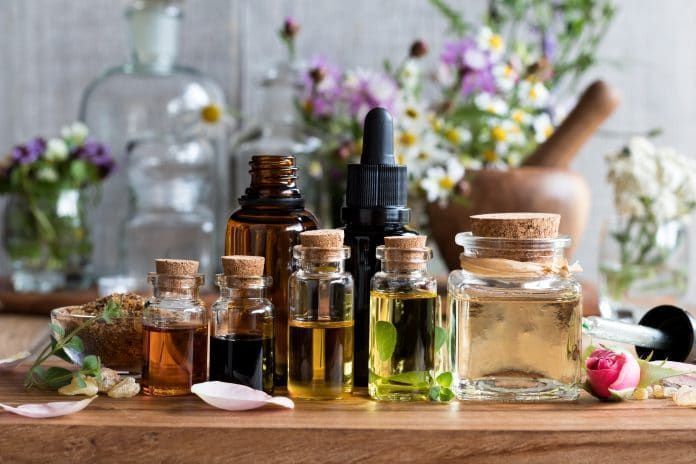
Aromatherapy and phytotherapy: what are the differences ?
Care based on synthetic drugs is of less and less interest to many patients. Many people today prefer to use traditional methods or so-called natural medicine. In fact, there are precise terms for these natural treatment methods.
Generally, we talk about aromatherapy or phytotherapy to name a few. What is the substance of each of these medicinal methods ? How to differentiate them ?
Phytotherapy: a plant-based treatment method
Herbal medicine is an alternative to conventional medicine. Some people use them when drug treatments have proven their limitations or because they fear the side effects of the drugs.
Herbal medicine is the use of carefully selected and blended herbs to treat ailments of all kinds. Generally, this form of treatment is recommended for people who suffer from depression, poor digestion, infections, etc.
On Bio et santé, you will discover a multitude of remedies from the Euro santé diffusion brand. You will also find mother tinctures, lactic ferments and phyto-complexes. The advantage with these treatment solutions is that they are proven enough that patients using them do not fall victim to overdose.
This is a change from herbal teas and other homemade products that do not necessarily comply with regulations regarding the proportions of components.
Moreover, phytotherapists who do research and development are succeeding in producing more and more medicines in galenic forms (tablets, powder, lotion, ointments, etc.). This makes it a little easier for the pharmacist to prescribe the right daily dosage for each patient.
Herbal medicine: a non-conventional medicine for a better well-being
The primary purpose of herbal medicine is to prevent disease and to “heal with plants”. This form of medicine is called non-conventional because the treatments are made from organically grown plants, leaves and roots, including.
Although many people have very little faith in this medicine, the results obtained after herbal health care are usually extraordinary. The direct action of the products on the skin or in the body often accelerates the healing of patients.
It is the case, in particular, when the patient is subjected to relaxing massage sessions. Generally, this is done with the help of essential oils. You will feel light after such a session and your skin will regain its color.
Aromatherapy: Millennia of medicinal practices based on essential oils
For centuries, aromatherapy (extraction and distillation of plants to make essences) has been part of the medicinal practices that have allowed people to cure a multitude of ailments and to protect themselves from the winter cold, for example.
It is exclusively based on the use of essential oils that were also used in the manufacture of perfumery products. Until recently, many people mistakenly referred to products derived from this form of medicine as grandmother’s recipes.
Indeed, it was not until 1935 that the French chemist René-Maurice Gatteffossé began a series of scientific studies to discover the curative and preventive properties of essential oils. The world owes him the paternity of the name “aromatherapy”.
From then to now, many other scientists have discovered that essential oils have unsuspected virtues. They are notably used to relieve anxiety in stressed people. A certain category of essential oils is also used to relieve people suffering from gastric disorders, sleep disorders, etc.
Aromatherapy: alternative medicine based on essences to soothe many ailments
The essences or essential oils are used in alternative medicine as aphrodisiac massage oil, for example. Distilled and freed from all fatty substances, they are also used externally to treat rheumatism and muscular pains, among others. Other ways of use are internal and respiratory.
Some examples of ailments that can be cured with aromatherapy
Centuries of empirical use of many essential oils have made it possible to identify the ailments on which they have a certain effect. The best known are lemon essential oils, eucalyptus essences, sweet orange or peppermint essential oils, etc. They reinforce concentration and vigilance against all odds.
They also allow a progressive regeneration of the skin and toning it.
To fight against fatigue, some people inhale the smell of essential oils. This makes them calmer, more relaxed and improves their life hygiene. Many sportsmen use them to regain their energy and to recover a little faster from the energy surges made during a competition.
You can also choose an essential oil specially made to help you fall asleep. Thus, every morning, you will wake up with great vitality.
Regarding infections, essential oils are known to be very effective against microbes. They can help you get rid of bronchitis, migraine, etc. They are also powerful antiseptics.
However, there is still a concern. The question of whether essential oils are recommended for pregnant women and children.
Specifically, essential oils are not recommended for women who are pregnant. It is the same when a woman is breastfeeding. Furthermore, children under the age of three are not supposed to use essential oils.
Of course, there is an exception to all things. If you have no other option, you should have the child consulted by an aromatherapy specialist. If not, he will advise you on the appropriate dosage.
Aromatherapy and phytotherapy: two complementary medicines
Aromatherapy and phytotherapy treatments are administered to patients using medicines without chemical additives. These medicines are, in fact, derived from the transformation of different parts of trees, plants and flowers.
These include leaves, branches, roots, bark. For certain types of ailments, the naturopath can combine the two treatments. In these conditions, we speak of phyto-aromatherapy.
Moreover, it can happen that a phytotherapist prescribes to a patient treatments in aromatherapy.